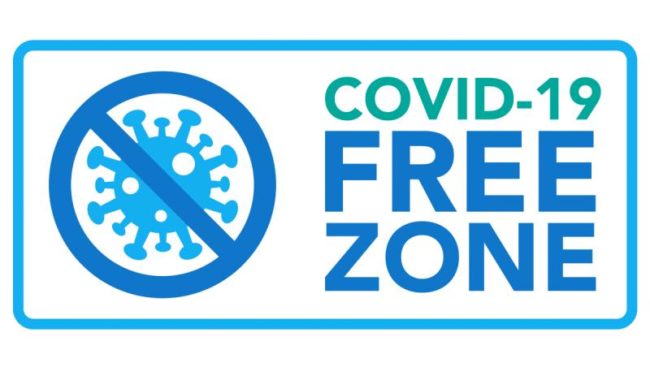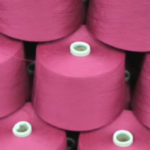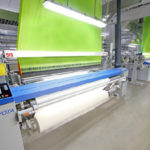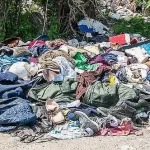
The prolonged outbreak of COVID-19 worldwide has created a need within the various sectors of the linen, uniform and facility services industry for information on the stability and survival of SARS-CoV-2 not only on various surfaces, but also its ability to survive the wash process.
Study confirms: contaminated laundry poses a risk
Textile care workers know: Dealing with contaminated laundry involves risks. This is now also confirmed by the new study. The knowledge that textile care workers are infected by infected laundry or that the pathogens can be transmitted from one part to the next (cross-contamination) is not new, but forms the basis of the investigation. “It is therefore important that the workplaces are well equipped,” emphasized a spokesman for the TRSA. Potentially infected laundry should therefore be
processed in a separate area , separately from the rest of the dirty laundry. This separation also reduces the risk of spreading pathogens via surfaces or work clothing.
Temperature, detergent and types of fabrics were examined
In the first phase of the study, the researchers sifted through specialist literature and found
that little was known about how the coronavirus behaves when washing. In a second step, they determined the scope of the study: They selected different textiles for the investigation and decided which washing parameters should be used to carry out the tests. This included the concentration of pathogens as well as detergents and solvents, the temperature during washing and the speed of the drum.
|
Coronaviruses affect polyester, cotton and blended fabrics
The results at a glance:
- The tested coronavirus strain (HCoV-OC43) remained contagious on polyester fabric for at least 72 hours ,
- The model viruses persisted in fabrics made of 100 percent cotton for 24 hours .
According to the study, the virus can spread from a polyester fabric to other surfaces for up to 72 hours . From this, the researchers conclude that textiles in healthcare or in the home environment can pose a risk of transmission. Caution : the virus dried up under laboratory conditions. It could therefore stay on wet laundry in closed bags for a longer period of time.
This is how viruses behave when washing
- In water with temperatures up to 60°C , the tested coronaviruses were ten minutes infectious .
- After washing in a washing machine at room temperature , the researchers were able to detect traces of the virus if other substances such as saliva adhered to the textiles.
- If the textiles were moved during the wash cycle and combined with detergent at a temperature of 40°C , no traces were detectable.
Risk: work clothing that has not been professionally washed
“At the beginning of the pandemic, little was known about how long the virus on textiles can hold,” Dr. Katie Laird, director says the research group infectious diseases at the DMU. The results of their research have now shown that even most commonly used textiles a large There is a risk of transmitting the virus, for example when nursing staff or healthcare workers take their work clothing home with them. In these cases, the virus could get onto other surfaces. According to
experts surveyed by the TRSA , textile service providers mainly use mixed fabrics made of cotton
and polyester Workwear and flat linen are used.
Washing in household appliances is not recommended
According to the researchers, coronaviruses are destroyed when washing. But the right combination of exercise, temperature and detergent is important. This means that almost all household appliances can fight the virus with washing processes at 40 ° C with common detergents. According to DTV, the danger in the domestic environment comes from other places: sorting the laundry and loading the machines. These risks of transmission could be avoided in a controlled environment in professional textile care.
“Clothing that may still be contaminated for three days should, in the best of cases, not even reach the home environment,” says DTV managing director Andreas Schumacher. Because in the home environment, the laundry is often picked up several times before the actual washing process and the same laundry basket is often used for dirty and clean items. In addition, the washing machine itself may be in the kitchen next to the stove or dishwasher and thus carry the risk of cross-contamination.
“In particular, textiles from the health and care sector and work clothing in general should not be washed at home,” warns Schumacher. This is the only way to avoid the possible transmission of pathogens to families and patients. In commercially available washing machines for private use, the virus could also – unlike professional devices – get stuck in neuralgic points such as
the pump, the drawer or between the rubber and washing machines. When washing, these areas are not exposed to the necessary temperature to render the virus harmless.
Reusable solutions with a clear hygiene advantage
However, the hotel and catering industries in particular should not jump to conclusions from the study, emphasizes Schumacher and appeals to companies: The possible contamination through fabrics
is no reason to replace fabric tablecloths and serviettes with paper solutions. On the contrary: Professionally prepared table linen offers a clear hygiene advantage when changed regularly and at the same time protects the environment.
There are four things to keep in mind when handling infected laundry
The current study confirms the guidelines of the TRSA drawn up in March 2020 , which the association for textile care companies, textile service providers as well as for companies from gastronomy, industry or the health care system set up in dealing with infected laundry. Based on the requirements of the World Health Organization (WHO) , the TRSA still recommends laundries and textile care companies:
- Potentially infectious laundry should be packed and transported in such a way that containers do not open and bags do not burst.
- During operation, textile care workers store the containers or bags in their own area in such a way that they have to be moved as little as possible. This reduces the risk of the virus spreading through the room air, surfaces or employees .
- Personnel who handle contaminated laundry must know and apply the applicable safety precautions . This includes, for example, thorough hand washing after taking off your own protective equipment.
- The fabrics should be washed and dried using standard methods. In the hot water process , the parts should be washed at 70°C for at least 25 minutes with the addition of detergent or disinfectant . For lower temperatures , chemicals suitable for the respective temperature range should be used in the required concentration.
TSA and industry associations commissioned study
The study was commissioned by the Textile Services Association (TSA) together with other industry associations such as the European Textile Services Association (ETSA) and the German Textile Cleaning Association (DTV). It is currently being subjected to a so-called peer review. The scientific tool is used for quality control and means: The results are already available, but experts from the same specialist area review the method used in the study . Then the paper will be published. The results of the study carried out can now be viewed.





